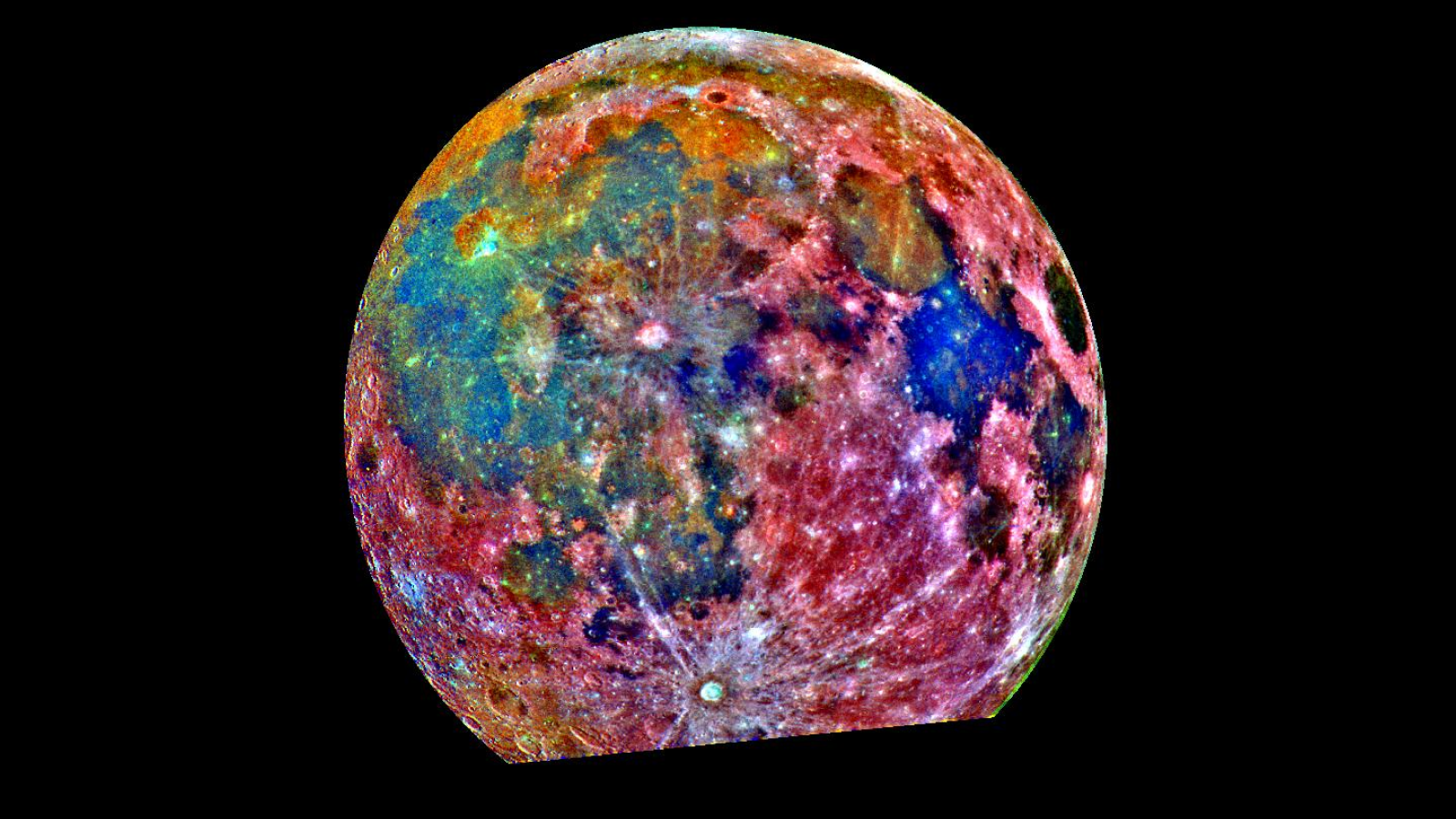Blue moons, blood moons and honey moons have all worked their way into fiction and folklore, but the changing hue of our planet’s biggest satellite remains rooted in science. The moon doesn’t produce any of its own light, instead reflecting white light from the sun. So what color is moonlight and why does it sometimes transform into different colors, at least from Earth’s perspective?
The answer has to do with how much of this reflected light reaches us on Earth. Samples taken from the moon reveal it to be principally a light-gray rock called anorthosite, with some darker areas of basalt, said Christine Shupla, science engagement manager at the Lunar and Planetary Institute.
“The gray rock is an equal-opportunity energy absorber,” she told Live Science — it takes a tiny bit from every part of the spectrum but, broadly speaking, reflects white light down to Earth, giving the moon its typical grayish-white appearance.
However, various atmospheric and astronomical phenomena can restrict the wavelengths that reach us. “Light scattering processes in the Earth’s atmosphere are key to how we perceive the colour of the moon,” explained Evelyn Hesse, an atmospheric optics researcher at the University of Hertfordshire in the U.K.
From a position high in the sky, moonlight has a relatively short path through the atmosphere, so this scattering effect is negligible and all the reflected light reaches the surface. But closer to the horizon, the moonlight must pass through the atmosphere at an angle, creating a longer path and allowing molecules of oxygen and nitrogen in the atmosphere to interact with the incoming light.
Moonlight initially contains a mixture of visible wavelengths between 380 nanometers (violet to human eyes) and 750 nanometers (red), but each of these will be scattered to a different extent by the particles in the atmosphere. In the case of atmospheric gases, blue light is scattered most strongly — a process known as Rayleigh scattering. This phenomenon makes the moon appear orange when it’s low in the horizon. As the light takes a longer path through the atmosphere from this position, only these orange wavelengths reach the surface.
Related: Will Earth ever lose its moon?
This effect is exaggerated for a blood moon or lunar eclipse, Shupla said. “During a lunar eclipse, the Earth’s shadow is covering the moon, so the only light that is reflected is the light that is bouncing through our atmosphere to the moon,” she explained. “All the blue light is getting absorbed by the atmosphere, and what’s left over are the oranges and reds.”
But it’s not just nitrogen and oxygen changing the composition of moonlight. High clouds, pollution and dust can all influence the moon’s appearance, scattering different parts of the visible spectrum depending on the size of the particles.
“After volcanic eruptions, the air contains large amounts of ash particles (about 1 micron in size) which preferably scatter red light, [so] the moon might appear blue since only this component of the visible spectrum reaches the observer,” Hesse told Live Science in an email. “In an analogous way, smoke from wildfires might scatter the blue light out of the moonlight beam, making the moon appear red due to the remaining part of the solar spectrum.”
However, the popular definition of a blue moon is when there are two full moons within a calendar month. Another definition, dating to 1528, describes a blue moon as the third full moon in a season that has four full moons. Neither of the definitions, however, are connected to the moon’s true color; most of these blue moons will actually appear whitish.
Moonlight can also appear as other colors. Full moons during June can often look honey-colored, giving rise to the name honey moon, Shupla said. The traditional wedding holiday, which many people choose to take in June and July, probably takes its name from this phenomenon, she added.
Even more striking, when the path of moonlight is diverted — known as refraction — it can create some extraordinary colors as the individual wavelengths begin to separate. “At very specific conditions, when the moon is close to the horizon, one can observe the lunar green flash,” Hesse said. “This is when the moon’s light undergoes atmospheric refraction, resulting in different wavelengths taking slightly different paths. But this will only last for a few seconds.”
This same dispersion effect is likewise responsible for a rare rainbow halo on the moon. “If there are ice crystals high in the atmosphere, light from the moon can bounce off of those crystals and refract the same way it does in raindrops and it makes a little rainbow around the moon,” Shupla said.
So what color is moonlight? Light reaching the moon is certainly whitish, but optical interactions can transform its appearance, making it difficult to assign moonlight a definitive color. “I would say it’s ephemeral!” Shupla said.
Moon quiz: What do you know about our nearest celestial neighbor?
